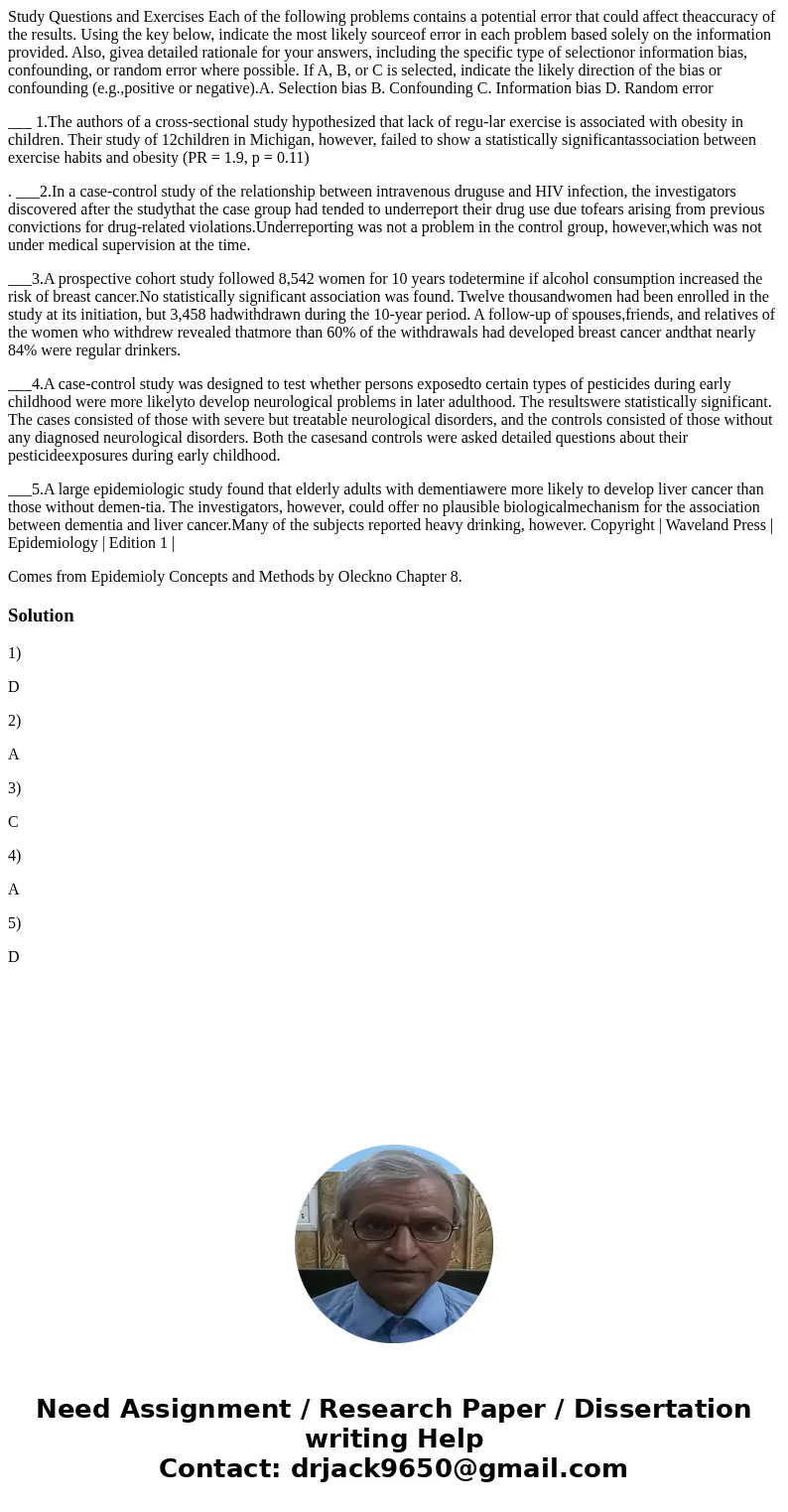Study Questions and Exercises Each of the following problems
Study Questions and Exercises Each of the following problems contains a potential error that could affect theaccuracy of the results. Using the key below, indicate the most likely sourceof error in each problem based solely on the information provided. Also, givea detailed rationale for your answers, including the specific type of selectionor information bias, confounding, or random error where possible. If A, B, or C is selected, indicate the likely direction of the bias or confounding (e.g.,positive or negative).A. Selection bias B. Confounding C. Information bias D. Random error
___ 1.The authors of a cross-sectional study hypothesized that lack of regu-lar exercise is associated with obesity in children. Their study of 12children in Michigan, however, failed to show a statistically significantassociation between exercise habits and obesity (PR = 1.9, p = 0.11)
. ___2.In a case-control study of the relationship between intravenous druguse and HIV infection, the investigators discovered after the studythat the case group had tended to underreport their drug use due tofears arising from previous convictions for drug-related violations.Underreporting was not a problem in the control group, however,which was not under medical supervision at the time.
___3.A prospective cohort study followed 8,542 women for 10 years todetermine if alcohol consumption increased the risk of breast cancer.No statistically significant association was found. Twelve thousandwomen had been enrolled in the study at its initiation, but 3,458 hadwithdrawn during the 10-year period. A follow-up of spouses,friends, and relatives of the women who withdrew revealed thatmore than 60% of the withdrawals had developed breast cancer andthat nearly 84% were regular drinkers.
___4.A case-control study was designed to test whether persons exposedto certain types of pesticides during early childhood were more likelyto develop neurological problems in later adulthood. The resultswere statistically significant. The cases consisted of those with severe but treatable neurological disorders, and the controls consisted of those without any diagnosed neurological disorders. Both the casesand controls were asked detailed questions about their pesticideexposures during early childhood.
___5.A large epidemiologic study found that elderly adults with dementiawere more likely to develop liver cancer than those without demen-tia. The investigators, however, could offer no plausible biologicalmechanism for the association between dementia and liver cancer.Many of the subjects reported heavy drinking, however. Copyright | Waveland Press | Epidemiology | Edition 1 |
Comes from Epidemioly Concepts and Methods by Oleckno Chapter 8.
Solution
1)
D
2)
A
3)
C
4)
A
5)
D

 Homework Sourse
Homework Sourse